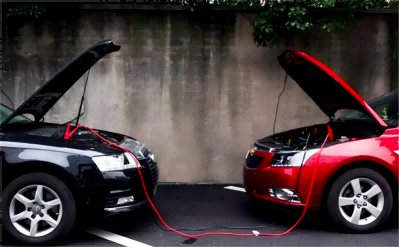Why Some Car Batteries Last 5 Years While Others Die in 2
Winter is the peak season for car battery problems. Many drivers find that after leaving their car parked for a few days, the engine won’t start because the battery has drained. Once the battery starts failing, it can trigger a chain reaction of issues—higher fuel consumption, hard starts, unstable fuel pressure, and even safety risks.
Let’s break down why this happens and what you can do about it.

Why Car Batteries Drain Faster in Winter
Cold weather is the enemy of all batteries—whether it’s your car battery or your phone. Car batteries perform much worse in low temperatures.
- Ideal operating temperature: Around 77°F (25°C).
- Capacity loss in cold: For every 1°C (1.8°F) drop, a battery’s available capacity decreases by about 0.8%.
- Extreme cold impact: A battery that might last 3 years at normal temperatures could drop to less than 2 years in -4°F (-20°C) conditions.
Average Lifespan of Car Batteries
- Gas-powered cars: Most use lead-acid batteries with 200–500 charge cycles. Lifespan is typically 2–4 years.
- Cars with start-stop systems: Use enhanced batteries with 400–800 cycles. Lifespan is usually 4–6 years.
- Electric vehicles (EVs): Use lithium batteries that can last 5–8 years or more.
But real-world results vary a lot—mainly because of driving and maintenance habits.
Habits That Shorten Battery Life
1. Using high-power electronics with the engine off
Listening to the radio for a few minutes is fine. But running the headlights, AC, or heater without the engine can drain the battery quickly—sometimes enough to make starting the car impossible the next day. Avoid using multiple external devices in the car at once when the engine is off.
2. Repeated failed start attempts
Starting your car requires a large burst of current. Multiple back-to-back attempts can drain the battery fast.
- Keep each start attempt under 5 seconds.
- Wait at least 15 seconds between tries. If you need to use electronics for a while, start the engine to avoid draining the battery entirely.
3. Letting the car sit for too long
Batteries naturally self-discharge. Even when parked, your car’s electronics slowly drain power—about 1% per day. If the car sits too long, it may not start.
- If you won’t be driving for a while, disconnect the negative terminal to slow the drain.
- Or, start the car every 1–2 weeks and let it idle for 10–20 minutes, or take it for a short drive to recharge.
What to Do If the Battery Dies
The most common fix is jump-starting:
- Park a working car close to the dead one.
- Connect positive (red) to positive on both batteries.
- Connect negative (black) to negative on both batteries.
- Start the working car and give it a little gas.
- Try starting the dead car.
Safety tip:
- Always connect positive first, then negative.
- When disconnecting, remove the negative first, then positive.
Other options:
- Use a portable jump starter.
- For manual transmissions, push-start or tow-start the car.
Bottom line: Batteries wear out over time, but you can slow that process. Avoid draining it with electronics, limit repeated start attempts, and keep the car running regularly. A little care can save you from unexpected breakdowns and extend your battery’s life.

